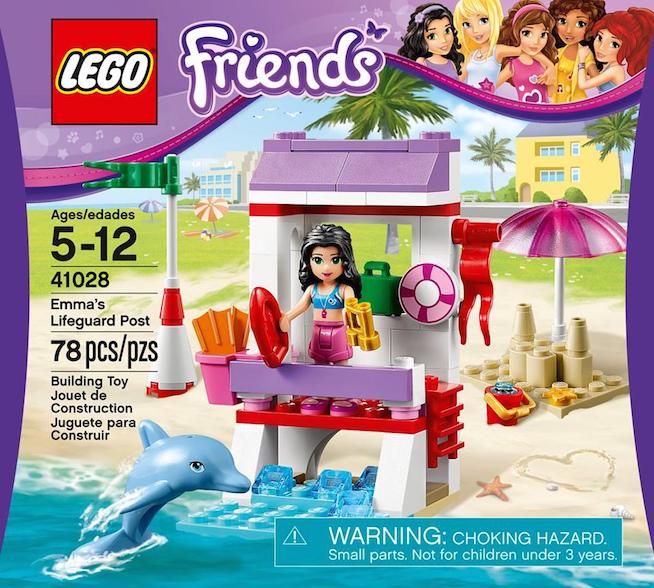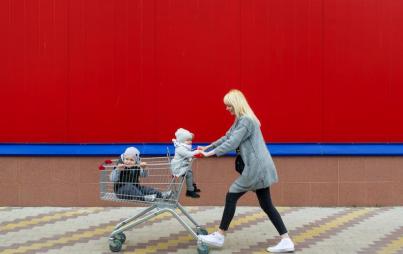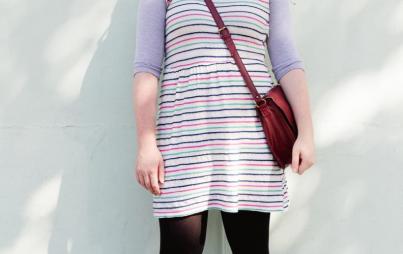
LEGO Friends. Image: Flickr
One of the worst feelings in the world, as a parent, is watching your child experience shame for the first time. I first saw shame take over my son’s face in a somewhat unexpected place: the toy aisle at Target, a place that should normally be full of joy for a kid.
He had been enamored with a LEGO Friends play set featuring a little bunny habitat. It was adorable, and he was in a phase where he wanted to make every outdoor creature into a pet. On our next shopping trip, he found himself face-to-face with the little purple box. And then it hit him: this was a toy for girls.
There was a lot of pushback when LEGO first introduced its “Friends” line, a division marketed at girls with lots of pink and purple. Instead of LEGO’s iconic minifigures, Friends featured curvy little figurines that were not compatible with the standard minifigures. At the launch, the Friends sets featured girls in social or domestic roles, like hairdressing, baking muffins, and meeting friends for coffee. Looking at the initial offerings, the LEGO Friends world looked like the1950s, not 2012.
LEGO quickly tried to remedy this problem after a change.org petition started by the SPARK Movement’s Bailey Shoemaker Richards and Stephanie Cole went viral. Soon LEGO Friends offered play sets that included an inventor’s studio, a treehouse, and a veterinarian's office.
Despite LEGO’s continued efforts to add diversity to their Friends play sets, as a mother and a feminist, I feel there is still work to be done regarding gender and LEGOs. Not just so girls know that they belong in laboratories as much as in kitchens, but also so that kids aren’t taught that boy stuff is normal and girl stuff isn’t.
♦♦♦
When my boys want to look at LEGOs, they head to the “boy toys” section and straight to the LEGO aisle, where one can find Star Wars, LEGO Creator, Marvel super heroes, and LEGO City (with everything from police stations to airplanes to coast guard ships) sets. LEGO has almost everything a kid could want, except the bunny habitat my little boy so desperately wanted. They also didn’t have the hot air balloon or cafe that he’d been eyeing in the catalogue. Those are in LEGO Friends, in the girl section of the store.
The day we went in search of the bunny habitat, we ventured to the girl section of the store, where he glanced around furtively, clearly worried someone would see him. His dad and I have both supported our boys in choosing whatever toys they like. We’re a very progressive family and we’ve never policed our kids’ gender expressions. But somehow, somewhere, my son had learned that wanting LEGO Friends was something to be ashamed of.
So he set the bunnies back among all the other purple boxes and walked away. No amount of pep talking or support would change his mind, and he ended up choosing an underwhelming motorcycle set. Buying the bunny habitat was, somehow, just too shameful.
The problem, for him was not that the LEGO Friends set showed a girl as the bunny caretaker. In the past, he’d chosen LEGO sets that had female characters in them. He even had a prized Wonder Woman minifigure in his collection. But everything about LEGO Friends, from the placement in the store to the commercials on TV, screamed, “THIS IS NOT FOR YOU!” to my son. And he listened.
♦♦♦
This wasn’t the first time my sons encountered the gender-shaming of toy marketing, but it certainly was the most dramatic. A few years earlier they decided to save up for an Easy-Bake Oven. When they finally had enough money, we headed out as a family to buy it.
When my husband picked up the box and plopped it into the cart, the kids paused. They considered the Queasy-Bake Oven, the same oven marketed at boys, where they could cook up bugs and dog bones, but they wanted to make cookies and pretzels, not bugs.
After much discussion, they landed on buying their original target, but there was a palpable sense of embarrassment that we had to work through with them. With the oven, it was easier because of the allure of cookies and cake. They also decided amongst themselves that, if anyone asked, they could say it belonged to their female cousin.
♦♦♦
When I was a little kid, my brother and I had an Easy-Bake Oven. It was orange and yellow, and looked like a microwave. I also grew up in the golden age of LEGO, at the same time that the now-iconic freckled little girl smiled proudly with her LEGO creation in advertisements. I was just like her: boys’ jeans, ringer tee, practical double braids and a pair of sneakers. Sure, we had dolls and pretend food. But it seemed like most toys were for everyone, and both LEGO and Easy-Bake were included in that list.
Somehow, after 30 years of supposed progress on gender issues, Easy-Bake and LEGO are now gendered. There’s now a boy Easy-Bake now in a shiny black and stainless design, an alternative to the purple one. And there are LEGOs and LEGOs for girls.
This gendered divide not only reminds girls that that they’re supposed to like pink and purple, and that they’re supposed to giggle and gossip, like the girls in the commercials. It also reminds our boys that girls are different. That they are the “other.” That they don’t belong in the regular LEGO section, they belong off by themselves.
That’s terrible for girls, but it doesn’t just affect them: by making the LEGO Friends so dramatically different from the standard LEGO sets, we’ve also told our boys that these toys are off-limits to them. We’ve told them that liking the idea of a LEGO bakery or flower shop or bunny habitat is not for them.
This all may seem unimportant. After all, the vast majority of the LEGO product line is designed with boys in mind, and boys often gravitate more toward the swashbuckling, alien-zapping toys. But there are a lot of boys out there who want to play with the bunny hutch. Not just gender non-conforming kids (though we should be looking out for them, too), but your mainstream, middle-of-the road boy who wants to fly the hot air balloon, build a little cafe, or drive the veterinarian ambulance, and LEGO keeps telling them, “No, you can’t. You need to be a man.” And that builds shame, which is poisonous to kids.
Any time you hear a boy say with disgust, “That’s for girls!” you know that this gender divide is dangerous. All things girly come to be maligned. The parts of themselves that identify with the girlier toys get pushed down. The best outcome here is that boys see femininity as something separate from them, rather than a part of who they are in small or large ways. The worst outcome is that they see femininity as the enemy of masculinity, something to be controlled or even maligned.
Playmobil has done a brilliant job of creating a wide range of toys that appeal to both boys and girls. They have fairies, space stations, castles, and pirate ships, but these toys are not divided into different sections, and they aren’t branded differently. The boxes are the same shape, and all the figurines are compatible, so accessories can be interchanged. Even the products that are most stereotypically “girly” are a bit more neutral. There’s nothing wrong with making toys that cater to traditionally “girly” aesthetics, but their products never overtly exclude boys.
They also have a large collection of toys that don’t point toward gender at all, creating a wide middle ground for kids of any gender to enjoy. The boy figurines intermingle with the girl figurines. At our house, the kids switch accessories and settings so that sometimes the veterinarian (a woman) is holding a sword and fighting a dragon, while riding a pirate ship. I love to see this sort of creativity.
Playmobil is far from perfect, however. They can be painfully unaware of the racial implications of some of their toys, like the cowboys and Indians sets that are banned from my house. But when it comes to gendered marketing, they are closer to the mark than LEGO, and hopefully Playmobil will serve as a model for where LEGO needs to go in regards to gender, rather than the other way around.
♦♦♦
If we want our kids’ future to be more inclusive and feature more gender equality, we need to rid them of the sense that boys and girls are so dramatically different, and stop teaching boys that girls are outsiders who have to be sequestered away. We need to stop putting shame upon boys for liking things we’ve named as girly, and stop thinking that “gender neutral” only means girls being tomboys. Boys want to play with girly stuff, too, and we have to make that OK for them — for the benefit of our sons and our daughters.







